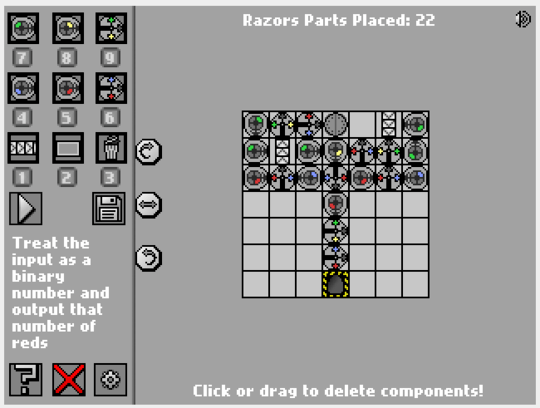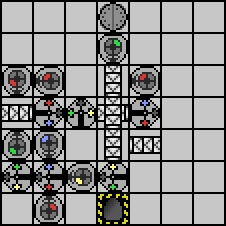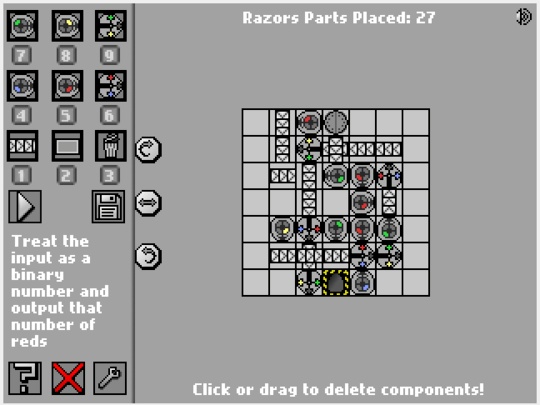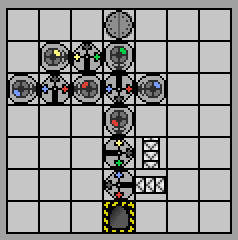30 26 24 22 Parts

Here is my entry, with 22 parts and a time of 4:16. This can be rearranged slightly to fit into a 5 wide by 7 tall space.
It works by dividing the tape into three sections: the instructions (blue and red), the data (green), and a data terminator symbol (yellow). Each cycle of operation, it reads and replaces the first instruction. It then cycles the rest on the instructions to the back of the tape until it reaches the data. For each data symbol read, it adds two of them to the back of the tape. Once the data terminator is read, the instructions are once again at the front of the tape. It deletes the first instruction (which was just executed). It then adds one more data symbol to the end of the tape if the current instruction (read earlier) is blue. The yellow symbol is then re-appended. Once there are no more instructions, then all of the green symbols are converted to red and are output.
Example: input is BBR (110 or 6)
These are the important steps in execution, in more detail than before
BBR
BBRY #yellow is appended
YBBR #the instructions are cycled through, execution is on the left half
YBBR #all of the greens (none yet) are duplicated
BRG #Y and B are removed and a G appended
BRGY #yellow is appended
GYBR #instructions are cycled, execution is on left half
YBRGG #Gs are duplicated
RGGG #Y,B removed; G added
RGGGY #Y added
GGGYR #instructions are cycled, execution is on RIGHT half
YRGGGGGG #Gs duplicated
GGGGGG #YR removed, G NOT added
GGGGGGY #Y added
YRRRRRR #Greens are changed to red
RRRRRR #output




1How do you win the competition? – beary605 – 2012-08-04T05:24:58.917
Lets say least pieces. I really just want to see if people come up with different solutions than I did – dspyz – 2012-08-04T07:28:43.553